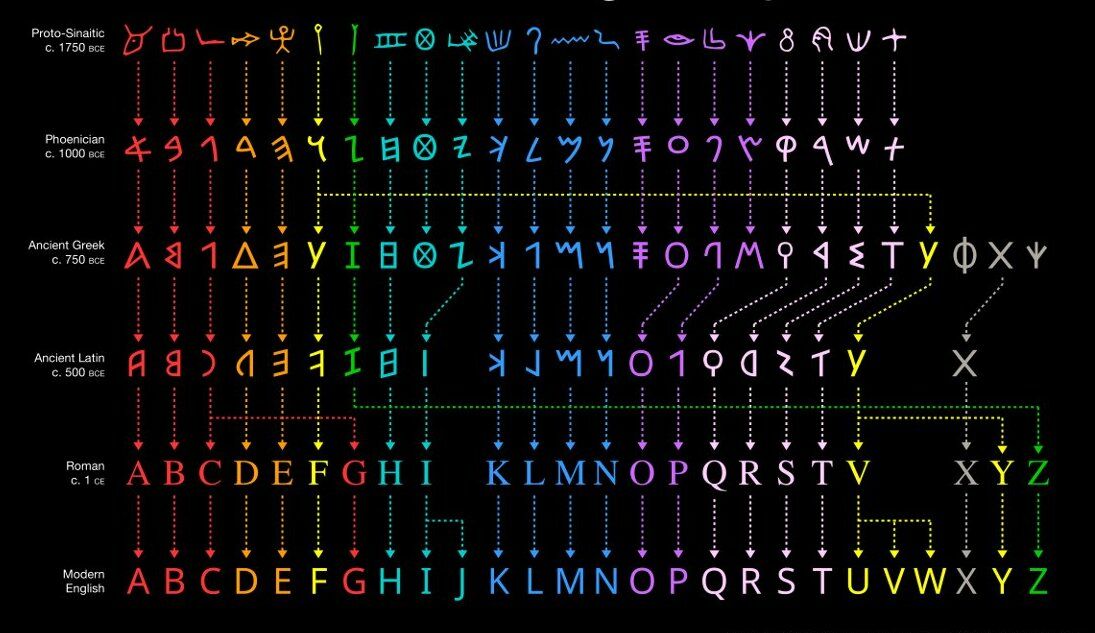“The most perfect product, in regard to the external artistic structure, of the Old Testament scriptures”—this is how Lange’s Commentary describes the book of Lamentations, a book traditionally ascribed to the pen of Jeremiah (or Baruch) around the time of Jerusalem’s fall to the Babylonians. A book “so artistic, that anything like it can hardly be found in any other book of Holy Scripture.” Adam Clarke’s Commentary contains similar sentiments: “The composition of this poem is what may be called very technical. … I have called this an inimitable poem; better judges are of the same opinion.”

Continuing from Adam Clarke’s Commentary: “‘Never,’ says Bishop Lowth, ‘was there a more rich and elegant variety of beautiful images and adjuncts arranged together within so small a compass, nor more happily chosen and applied’” (“Introduction to the Lamentations of Jeremiah”). The commentary also quotes the words of one Dr. South: “One would think that every letter was written with a tear; every word, the sound of a breaking heart: that the author was compacted of sorrows; disciplined to grief from his infancy; one who never breathed but in sighs, nor spoke but in a groan.” In the opinion of our institute’s founder and our magazine’s editor in chief, Gerald Flurry: “Lamentations is the most elegant poetry in all the Bible.”
These sentiments of textual perfection are somewhat less moving to certain textual critics, however, who have argued that the composition of the book of Lamentations reflects repeated scribal error.
Yet these arguments have actually now largely disappeared from view, thanks to some unusual archaeological discoveries.
Why such effusive praise of Lamentations’ poetic perfection? Why, conversely, the claim of fundamental “error” built into such poetry? And exactly what are these archaeological discoveries that have “come to the rescue” of the text?
Acrostic Perfection
One of the key poetic elements of Lamentations is its repeated acrostic composition. The book consists of five chapters. The first four chapters are in clear acrostic layouts based on the 22-letter Hebrew alphabet. Chapters 1, 2 and 4 each consist of 22 verses, and each verse begins with a successive letter of the Hebrew alphabet (i.e. verse 1 begins with “A,” א; verse 2 begins with “B,” ב; etc). Chapter 3 consists of 66 verses—in this case, every three verses begin with the same letter of the alphabet (i.e. the first three verses begin with “A,” א; the next three verses begin with “B,” ב; etc).
Chapter 5 is peculiar: It, too, consists of 22 verses, matching the number of letters in the Hebrew alphabet, yet there is no alphabetic flow through this chapter. Some commentators have pointed out that the chaos and destruction reflected in this final chapter of text may be intended to parallel the final collapse of order and structure in Jerusalem.
There are other poetic elements employed throughout Lamentations as well, particularly the “dirge”-form “limping meter,” also known as halting rhythm (Hebrew, qinah)—a “rhythm [that] is 3+2 or qinah metre, with variations of 2+3 and 3+3” (The International Bible Commentary, “Lamentations”). We’ll focus, however, on the general acrostic structure.
Acrostics are found in several Bible passages, particularly within the Psalms. (Most famous is Psalm 119, the longest chapter in the Bible: The 176-verse chapter is divided into 22 sets of eight verses, each set beginning with a successive letter of the alphabet—i.e. A, A, A, A, A, A, A, A; B, B, B, B, B, B, B, B; etc.) Lamentations, however, stands out as a book entirely framed around this general acrostic theme. The 22-letter Hebrew alphabet these biblical acrostics are built around is as follows (note that Hebrew reads from right to left):

This is the layout found in Lamentations 1. But in the acrostic layout of chapters 2, 3 and 4, something is different: Two of the letters—the 16th and 17th, ayin (ע) and peh (פ)—are switched. The alphabetical layout in these chapters is as follows:

See for yourself: Compare the Hebrew (links provided) of Lamentations 1:16-17 with 2:16-17, 4:16-17, and the three-verse divisions of chapter 3, 3:46-51.
Why this switch in alphabetical order?
Acrostic Problem?
Speculation abounds as to the reason behind this differentiation in alphabetical order. And as stated at the outset, one popular explanation for this was scribal—or even compositional—error.
“[I]n the first [chapter] only does the order of the letters entirely agree with the traditional arrangement of the alphabet, while, in the other three, the verse beginning with פ stands before that beginning with ע,” states the Keil and Delitzsch Old Testament Commentary (1866) in its introduction to Lamentations. It highlights different extant theories about this, including the “assumption that the verses in question were afterwards transposed in consequence of an oversight on the part of the copyist,” an assumption “adopted by Kennicott, Jahn, etc” (emphasis added throughout). It also highlights another theory, that such a switch should be “attributed to an oversight on the part of the composer (which is Bertholdt’s view)”—thus suggesting a fundamental flaw in original composition of the text, versus a later flaw merely in scribal transposition. (For their part, for various reasons, Keil and Delitzsch dismissed these theories as insufficient.)
Lange’s Commentary (1877) likewise addresses “the question why in chapters ii., iii. and iv. פּ is placed before ע.” Lange wrote that during his day, this was “usually explained as a copyist’s mistake … [the] supposition of an error of transcriber.” He too brought up Bertholdt’s theory, that the order-shift was “the result of forgetfulness on the part of the author” himself, rather than a later copyist.
The Soncino Commentary (1945) throws its hands in the air as to this question of alphabetical order in Lamentations: “This unusual order has never been satisfactorily explained.” Lange, as well as Keil and Delitzsch, dismissed such claims of error as proposed by Kennicott, Jahn and Bertholdt as unlikely, due to the consistent and thus apparently deliberate repetition of this different order in chapters 2, 3 and 4. Instead, they all concluded that this order represents the “liberty which the older poets especially allowed themselves in pursuing the alphabetical order” (Lange’s). They agreed that “the composers bound themselves rigorously by the order of the alphabet only so long as it fitted into the course of thought without any artificiality” (Keil and Delitzsch).
It’s an admirable and conceivably logical defense for their time of writing—but as archaeological discoveries have since shown, even this is not quite sufficient.
Abecedaries to the Rescue
An “abecedary” is simply an inscription consisting of the successive letters of the alphabet (i.e. “ABCDEFGHIJKLMNOPQRSTUVWXYZ”), typically for exercise purposes (a practice that, of course, continues to this day). In 1976, an inscription was discovered on a potsherd at Izbet Sartah (biblical Eben-Ezer). The judges-period inscription (circa 1200 b.c.e.) contained an abecedary on one of its lines of text in which the order of the letters ayin (ע) and peh (פ) was reversed—matching that of Lamentations 2, 3 and 4.

That same year, excavations in northern Sinai produced another such abecedary (this time, from around 800 b.c.e.)—again, the order of the letters ayin (ע) and peh (פ) was switched: first peh (פ), and then ayin (ע)!

In 2005, a 10th-century b.c.e. stone abecedary inscription was discovered at Tel Zayit (near Lachish). Again, the order of the letters ayin (ע) and peh (פ) are reversed, peh (פ) then ayin (ע).
In fact, such has been the windfall of these discoveries that they have led some to conclude the opposite—that this was the official and original order of the Hebrew alphabet (thus requiring the explanation of other, “normal”-order acrostics!). Yet there is hardly sufficient evidence to make this case. Indeed, our own English alphabet is derived from the Greek, which was, in turn, derived from the Hebrew-Phoenician alphabet sometime between 1200 and 800 b.c.e. (see here for a case of Hebrew transmission of this alphabet to the Greeks). Not only is our “O” actually derived from the Hebrew-Phoenician ayin (ע, in the early original script represented as  ), and our “P” from the Hebrew-Phoenician peh (פ, originally represented as
), and our “P” from the Hebrew-Phoenician peh (פ, originally represented as  ), but the order of nearly the entire alphabet, including the specific order of these letters, is the same as the standard Hebrew alphabet (O before P; see below—note that First Temple Period Hebrew and Phoenician are equivalent).
), but the order of nearly the entire alphabet, including the specific order of these letters, is the same as the standard Hebrew alphabet (O before P; see below—note that First Temple Period Hebrew and Phoenician are equivalent).

This, in part, shows that O before P (ע before פ) was indeed an official order during these early periods. Also to this point, Delbert R. Hillers, in his work Lamentations: A New Translation with Introduction and Commentary, highlights the presence of this “normal” ayin-peh sequence (as used in Lamentations 1) in Ugaritic texts nearly a millennium prior to the book of Lamentations.
Yet by the same token, based on these above-mentioned abecedary inscriptions, we also see that “P” before “O” (פ before ע), as in Lamentations 2, 3 and 4, was an equally justifiable variant being utilized.
The last half century of archaeological research has shown, therefore, that the acrostic order of Lamentations 2, 3 and 4 clearly does not represent the “error,” “oversight” or “forgetfulness” of a scribe or even the author. Nor does it necessarily fit with the 19th-century defense, that the author had latitude to rearrange certain letters of the alphabet where he saw fit. (Why, if this were the case, were these the only two alphabet-order variants used in Lamentations? Why were other letters not rearranged?) Instead, these abecedary inscriptions show that the book of Lamentations evidently utilized two known, equally official and consistent forms of the alphabet for its acrostic purposes—one with the standard ayin-peh order, and the other with the variant peh-ayin. As such, this claim of alphabetical “error” is no longer on the table of debate.

The exact reason for the utilization of these two different alphabets remains a question. Some argue that each chapter therefore represents separate poems from separate authors, which were later combined together. Yet others maintain strongly the traditional perspective, that the “consistent [overall] use of the alphabetical form and a unity of viewpoint together with repeated use of prophetic phrases and reference to their covenant warnings suggests a single author” (The International Bible Commentary, “Lamentations,” 1986). That “[t]he preponderance of the evidence points to Jeremiah being the author of Lamentations” (Craig Davis, Dating the Old Testament, 2007). Indeed, the second-century b.c.e. Greek Septuagint text of Lamentations ascribes the book directly to the Prophet Jeremiah. (A connection to 2 Chronicles 35:25 is sometimes pointed out by proponents, along with Jeremiah’s oft-mentioned title as the “weeping prophet,” to defend his identification as author of the text.)
So why, then, the switch to this alternative alphabet order in chapters 2, 3 and 4? Perhaps there is some unknown symbolic meaning. Each individual Hebrew letter, after all, carries its own meaning. As highlighted by The New Bible Commentary: Revised, “The quaint Rabbinic explanation of this feature [peh before ayin] is that ‘Israel spoke with the mouth (Pe) what the eye (‘Ayin) had not seen’, i.e. illicit things.”
Whatever the explanation or hidden meaning, the historical existence of this equally justified alphabetical structure, with peh (פ) before ayin (ע), is clearly demonstrated. The overly simplistic and critical theory of “error” underlying the structure of Lamentations has therefore been shown to be in error itself. Lange’s description of the book as a “perfect product, in regard to the external artistic structure” holds more true than ever before.
It’s becoming an increasingly common refrain: archaeological discoveries upending Bible-critical theories while the biblical text remains—as it has for thousands of years—the same.

